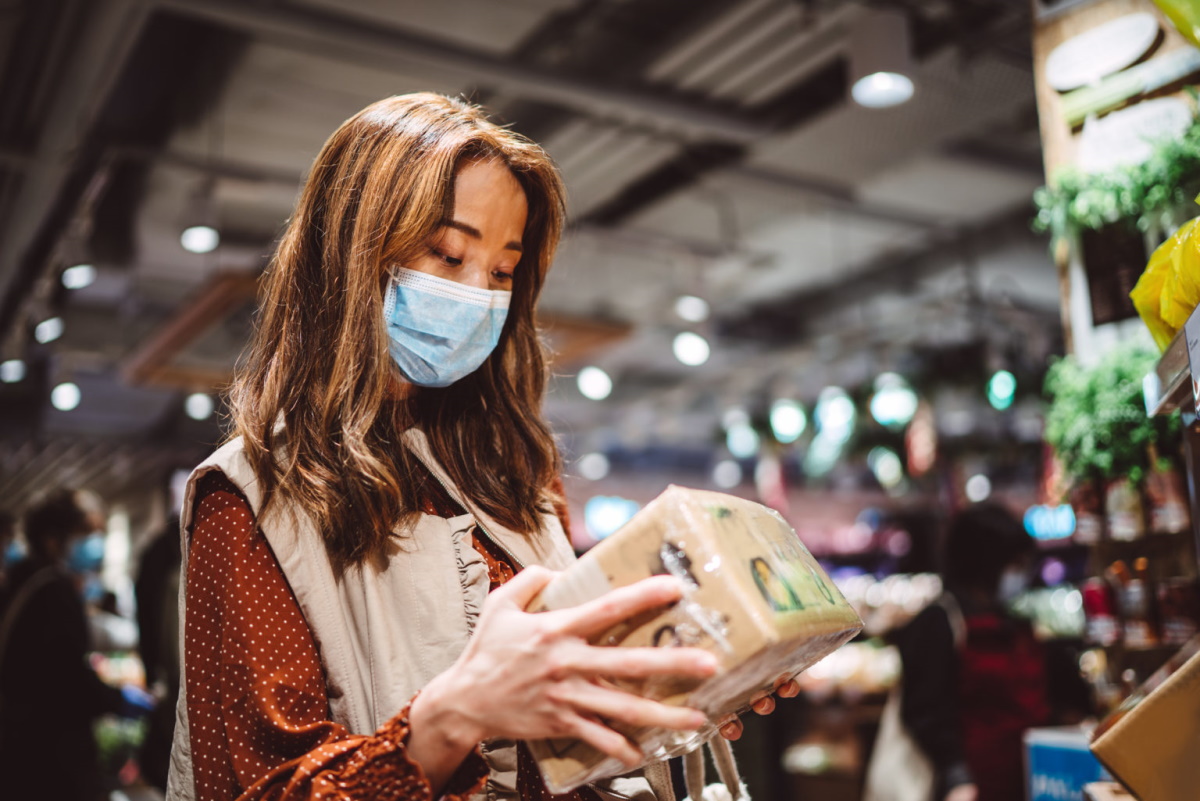Understanding COVID-19 Transmission Routes Key To Curbing Spread
Texas A&M professor says covering nose and mouth in public is a simple, yet critical habit people should adopt immediately.
Apr 29, 2020

The importance of wearing face protection during the COVID-19 pandemic has not been adequately emphasized by decision-makers when it comes to mandating what precautions people should take against the virus, according to a Texas A&M researcher.
There is existing evidence that Dr. Renyi Zhang and several of his colleagues say is enough to show that tiny, fast and invisible virus-bearing particles that escape when talking, breathing, coughing or sneezing can be easily inhaled into the lungs of another person — even minutes to hours after their release from an infected person, and despite social distancing measures being practiced.
Zhang, a Texas A&M University distinguished professor of atmospheric sciences, said guidance directed by the World Health Organization and the Centers for Disease Control has not been strict enough to curb the spread of the disease.
Some countries, including Germany, have made it mandatory for everyone in public to wear a mask. As researchers try to secure a deeper understanding of COVID-19’s transmission routes, Zhang said all proven helpful measures should be implemented now.
“Social-distancing and washing our hands must continue, but that’s not sufficient enough protection,” said Zhang, who submitted a policy paper with several colleagues, including a Nobel Prize-winning chemist. “The simple effort to wear a mask will reduce the chances of small infected airborne particles that you can’t see, from taking hold of your respiratory tract.”
For example: A man who doesn’t know he’s infected and isn’t wearing a face mask is in a grocery store. Another customer — also without protection over his nose and mouth — is in the store more than 6 feet away and never speaks with the man. Still, he easily could unknowingly inhale the infected particles, which quickly attach along the respiratory tract.
The complication of silent carriers moving through public spaces, combined with the current lack of fully understanding the virus’s transmission, hinders the development of effective mitigation policies that could be protecting the public, according to their finding.
The tiny virus-laden particles – known as aerosols — are proven through epidemiological and experimental studies to represent an important manner in which the disease is spread, Zhang said.
SLOW START
Guidance from the World Health Organization through mid-March erroneously suggested the virus could not be transferred through the air. Once that was proven not to be true, the CDC on April 3 reversed its initial guidance and recommended to the public they wear nonsurgical cloth face coverings when in public.
Dr. Mario Molina, a Nobel Laureate chemist who teaches at University of California-San Diego, said mandated face-coverings contribute to the distinct trends of the outbreaks between Wuhan, China; Italy and the United States with areas requiring masks showing a continuous decline in cases.
As of Tuesday, 56,259 people have died from the virus in the U.S. and another 988,197 have tested positive, showing significant increases week-over-week.
For Zhang and Molina, the fact a mask would help viral shedding and limit exposure to the infection wasn’t surprising since they’ve long studied how infinitesimal particles traveling through the air can easily be sucked into the lungs.
Both researchers are experts in global air pollution and have recently published studies on the effects of tiny aerosols on health using animal models.
“We want to use what we know to be scientifically true to contribute to solutions,” said Molina, who has collaborated with Zhang for more than three decades.
Molina is best known for his role in proving the threat to the Earth’s ozone layer of chlorofluorocarbon gases, and for his part in discovering the formation of the Antarctic ozone hole.
“We want to cut down the number of lives taken and impacted by this virus, so it is urgent that decision-makers realize that putting on a mask, covering our faces — such a simple thing — can save lives,” Molina said.
Zhang said the scientific evidence that COVID-19 is active in miniscule particles is clear.
Others involved in the paper include Yixin Li, a Texas A&M chemistry graduate student; Annie L. Zhang, a chemist at The University of Texas at Austin; and Yuan Wang, with geological and planetary sciences at California Institute of Technology.
By Texas A&M University Division of Marketing & Communications

